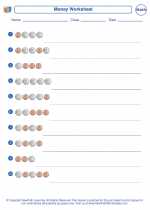Coins
In kindergarten math, learning about coins is an important part of understanding the concept of money. Coins are pieces of metal or plastic that have a specific value and are used as a medium of exchange for goods and services.
Types of Coins
There are several common types of coins that children typically learn about:
- Penny: The smallest coin, worth 1 cent.
- Nickel: A slightly larger coin, worth 5 cents.
- Dime: A small, silver coin, worth 10 cents.
- Quarter: The largest coin, worth 25 cents.
Identifying Coins
Children learn to identify coins by their size, color, and markings. For example, pennies are brown, nickels are silver, dimes are small and silver, and quarters are large and silver. Each coin also has specific engravings or images on them that help in their identification.
Understanding Coin Value
Children also learn about the value of each coin and how different coins can be used to make various amounts. For example, they learn that 5 pennies are equal to 1 nickel, 2 nickels are equal to 1 dime, and 4 quarters are equal to 1 dollar.
Counting Coins
Kindergarteners practice counting and adding different combinations of coins to understand the total value. They might use real or play coins to practice counting and making change.
Conclusion
Understanding coins is an essential early math skill that lays the foundation for understanding the concept of money and financial literacy. By learning about the different types of coins, their values, and how to count and use them, children develop a fundamental understanding of currency and its role in everyday life.
[Coins] Related Worksheets and Study Guides:
.◂Math Worksheets and Study Guides Kindergarten. Money
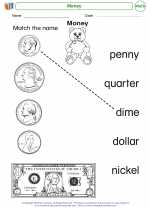
 Coloring Worksheet
Coloring Worksheet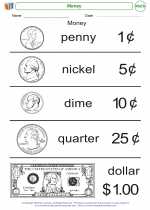
 Worksheet/Answer key
Worksheet/Answer key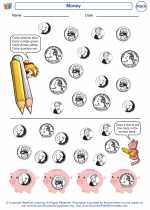
 Worksheet/Answer key
Worksheet/Answer key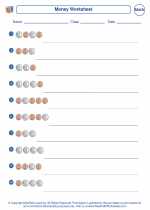
 Worksheet/Answer key
Worksheet/Answer key